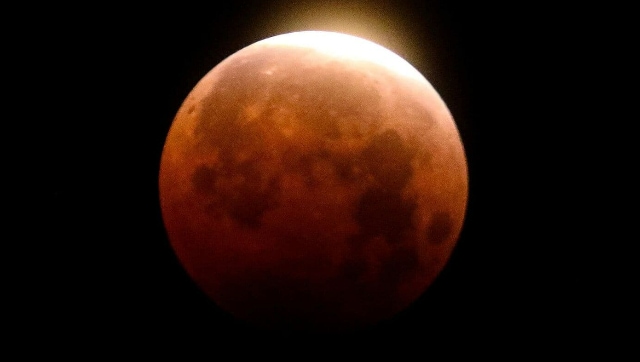FP TrendingNov 04, 2022 08:43:37 IST
After the recent partial solar eclipse, the world is all set to witness the last lunar eclipse of the year which will occur on 8 November 2022. According to NASA, the next complete lunar eclipse won’t happen for another three years until 14 March 2025. However, people will be able to watch partial and penumbral lunar eclipses throughout that time.

The Moon enters Earth’s shadow during a lunar eclipse when the Sun, Earth, and Moon all arrive in the same line. The entire Moon falls within the umbra, or deepest region of Earth’s shadow, during a total solar eclipse. The Moon’s colour changes to a reddish hue when it is in the umbra. This event gives rise to the term “Blood Moons” for lunar eclipses.
On November 8, 2022, the Moon will pass into Earth’s shadow and turn red. This will be the last total lunar eclipse for about 3 years, so be sure to check it out if it’s visible in your area.
Learn more: https://t.co/zetjapudzV pic.twitter.com/PJ0AuQrfEC
— NASA Moon (@NASAMoon) October 27, 2022
NASA, on one of the recent Twitter exchanges, explained, “On November 8, 2022, the Moon will pass into Earth’s shadow and turn red. This will be the last total lunar eclipse for about 3 years, so be sure to check it out if it’s visible in your area.”
Timing of the total lunar eclipse:
The lunar eclipse will continue for a total duration of 45 minutes and 48 seconds. In India, it will begin at 5:32 PM and will conclude at 6:18 PM.
Regions from where the total lunar eclipse will be visible:
Northern and eastern Europe, Asia, North America, a large portion of South America, Australia, Antarctica, and across some areas of the Pacific, Atlantic, Indian, and Arctic Oceans will all be able to see at least some part of the lunar eclipse, according to timeanddate.com. Only portions of eastern India can witness a total lunar eclipse, while the remainder of the country can only witness a partial eclipse. The Indian cities where a total eclipse might be visible are Kolkata, Siliguri, Patna, Ranchi, and Guwahati.
How to watch the lunar eclipse:
To witness a lunar eclipse, no specialised tools are needed. However, individuals can make use of binoculars or a telescope to improve their range of vision. People should head to a dark location away from strong lights during a total lunar eclipse to get the best view of the Moon’s red hue. The lunar eclipse will also be streamed online by a lot of organisations including NASA. People who reside in non-visible regions can visit NASA’s Dial-a-Moon to get a perfect view of the phenomenon.
Post a Comment